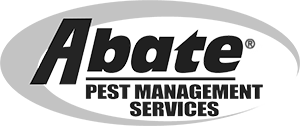The Role of Rodents in the Spread of Avian Flu

Following a rise in incidence of avian influenza (AIV) in wild birds, poultry, and captive birds in the UK, new regulations state that all poultry and captive birds must be housed indoors. Whilst keeping the birds indoors helps to avoid contact with infected wild birds, research suggests that transmission could be exacerbated by rodents in housed conditions.
AIV Transmission
When poultry flocks are housed indoors, more food is stored indoors with them, which in turn attracts rodents. Research by an Italian public health authority has proven that avian influenza viruses have the “ability to infect not only domestic and wild birds… but also non-avian species such as mammals”, which includes rats and mice. Although rodents cannot be considered the main cause of transmission of the virus, studies from the Veterinary Quarterly journal and the United States Department of Agriculture’s Animal and Plant Health Inspection Service (APHIS) epidemiology report show that rodents may facilitate the spread of avian influenza as a mechanical vector by picking up AIV from contaminated materials on their feet and coats and spreading it to poultry.
This research, paired with the devastating impact that avian flu is currently having on UK poultry farmers despite current housing regulations for birds, suggests that by keeping birds inside, away from other wild birds and poultry, we may not stop the spread of the virus.
Jon Blake, Managing Director of Abate Pest Management in Norfolk, commented:
“The impact of avian influenza that we are seeing in the UK, especially here in the East of England, is devastating. The correlation between rodents and the spread of the virus in poultry in housed environments means that we need to be extra vigilant in not only our adherence to the housing order, but also with rodent control.”
The Spread of Red Mites and Rodents
Studies suggest that rodents may also be contributing to the spread of red mites, a blood sucking insect present in bird housing. Red mites are nocturnal, and hide during the daytime in cracks and crevices, just like rats and mice. Rodents are likely to facilitate the spread of red mites by picking them up on their feet and fur, then spreading them to different parts of your chicken coop and around your property.
The housing order regulations are likely to exacerbate the population of red mites, as they are attracted to warmer environments. Although these mites aren’t linked with transmitting AIV, their presence can cause significant welfare issues, especially for egg laying birds, as the mites cause amnesia, reduced egg production, and even death.
As professional pest controllers, our advice at Abate would be to not only comply optimally with new poultry housing order laws, but to also ensure that you are protecting your poultry against rodents. For the housing order to have the desired effect in preventing the spread of AIV, effective pest control is absolutely vital. Without this, rats will continue to transmit avian flu to the housed birds as a mechanical vector, transporting the causative agent from contaminated material and spreading the AIV pathogens to poultry.
There are a range of insecticides for red mites that are bird-safe, which can be used to help prevent the spread of AIV and other pests to your housed poultry. To speak to us about treatments, complete our contact form today, or alternatively give us a call on 0800 980 9767.
